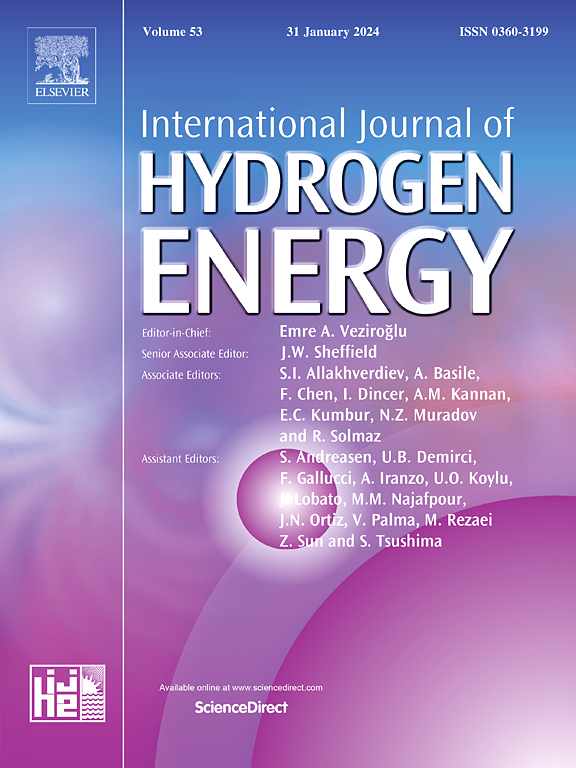界面工程:提高异质结构镍铁合金在价化碳废料上的电催化活性,实现水的分离
IF 8.1
2区 工程技术
Q1 CHEMISTRY, PHYSICAL
引用次数: 0
摘要
本文章由计算机程序翻译,如有差异,请以英文原文为准。

Interface engineering: Enhancing the electrocatalytic activity of heterostructure NiFe-based alloy over valorized carbon waste towards water splitting
Using cost-effective bifunctional electrocatalysts is a labor-saving approach to generating green hydrogen via accelerating kinetics for anodic and cathodic reactions, thus advancing the overall competence of water splitting. Herein, a facile electrodeposition approach, i.e., dynamic hydrogen bubble template (DHBT), is adopted to fabricate Ni–Fe-binary alloys at the surface of a wasted graphite rod (WGR) which is pre-treated via electrochemical oxidation in 1 M H2SO4 solution to bloom the surface properties, i.e., increase its hydrophilicity, surface roughness, and degree of exfoliation. Various analyses are applied to characterize the fabricated catalysts such as SEM, mapping EDX, TEM, XRD, XPS, and Raman tests. Linear sweep voltammetry (LSV) is used to probe the outstanding catalytic activity of NiFe/WGR towards both the oxygen and the hydrogen evolution reactions (OER) and (HER), respectively. It displays η@10 mA cm−2 of −77, and 283 mV for HER, and OER, respectively. NiFe/WGR as a bifunctional electrocatalyst presents a low cell voltage of 1.6 V at a current density of 10 mA cm−2 with insignificant change over a prolonged electrolysis time (24 h). This work shows the design of a profitable catalyst characterized by being active, stable, and bifunctional toward overall water splitting.
求助全文
通过发布文献求助,成功后即可免费获取论文全文。
去求助
来源期刊

International Journal of Hydrogen Energy
工程技术-环境科学
CiteScore
13.50
自引率
25.00%
发文量
3502
审稿时长
60 days
期刊介绍:
The objective of the International Journal of Hydrogen Energy is to facilitate the exchange of new ideas, technological advancements, and research findings in the field of Hydrogen Energy among scientists and engineers worldwide. This journal showcases original research, both analytical and experimental, covering various aspects of Hydrogen Energy. These include production, storage, transmission, utilization, enabling technologies, environmental impact, economic considerations, and global perspectives on hydrogen and its carriers such as NH3, CH4, alcohols, etc.
The utilization aspect encompasses various methods such as thermochemical (combustion), photochemical, electrochemical (fuel cells), and nuclear conversion of hydrogen, hydrogen isotopes, and hydrogen carriers into thermal, mechanical, and electrical energies. The applications of these energies can be found in transportation (including aerospace), industrial, commercial, and residential sectors.
 求助内容:
求助内容: 应助结果提醒方式:
应助结果提醒方式:


